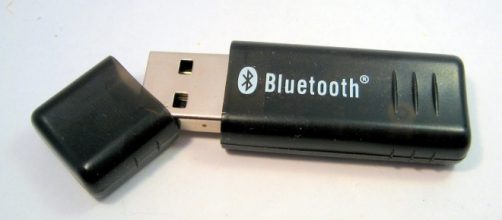Most of us have come to rely on Bluetooth without thinking about it. Like the air, it’s just there. However, Bluetooth 5, the latest version of the wireless technology standard released in December, has been beefed up to the point where it now has the potential to dramatically change how we use the devices we depend on every day. And that is opening up a whole new connective world in 2017.
Let’s take just one example. When you’re listening to music through headphones on a mobile device and you want your friend to hear it too, you can either unplug and blast the tinny sound (while irritating those around you) or remove an earbud and plant it in the other person’s ear.
Awkward!
Two sets of headphones at the same time
Bluetooth 5 solves that problem. The samsung galaxy S8 smartphone, due for release later this month, includes a new feature that wirelessly supports playback through two pairs of headphones at the same time. In the consumer gadget world, where shameless imitation abounds, watch for this feature to become standard across most mobile platforms in less than a year.
This and other examples were on full display at Bluetooth World last week in Santa Clara, California as developers and consumer device companies gathered to showcase the latest trends in wireless networking. “Bluetooth is one of the bedrock cornerstone technologies for the Internet of Things,” said Steve Hegenderfer, the director of development for the Bluetooth SIG, during his keynote address at the conference.
“And the nice thing about Bluetooth is that it does keep evolving.”
That evolution includes two new Bluetooth modes that can double data transfer speeds and quadruple transmission range. This means that a multitude of consumer gadgets, including speakers, fitness trackers, smartwatches and even detachable keyboards will basically work better from a longer distance.
Improvement for smart home devices
The new version also translates into a potentially vastly-improved smart home experience where wirelessly-connected light bulbs, doorbells, and thermostats will benefit from improved technology. Smart door locks, whose performance has been spotty unless you are standing right next to one, will likely see near-term improvement through the more robust Bluetooth standard.
Yet, there is an even more significant change for Bluetooth just around the corner that could have a major impact on consumer and industrial devices: the promised land of Mesh Networking. The ability of Bluetooth devices to talk to each other without needing a central hub or gateway is now just “months away” according to Hegenderfer.
The significance of mesh networking is grounded in the ability of Bluetooth devices to seamlessly transfer data around a group of products without worrying about a single point of failure. In mesh networking, the lights on a convention hall are all connected and anything can connect to them, without needing a gateway. “In the industrial world, this is going to be huge,” said Hegenderfer.
“If you’re not thinking about Bluetooth Mesh, you should be.”
The increase in Bluetooth’s power also means that the use of beacons, small low-energy radio transmitters, will likely grow. Already becoming a force in the retail world (get ready to receive a text message offering to discount your caramel frappuccino when you walk by Starbucks), beacons are also making it easier to guide blind people through public areas and help farmers measure temperature and humidity in the soil.
With the release of Bluetooth 5, there are already a host of new products entering the market. There is even a Bluetooth-equipped Frisbee now – the Disc Jock-e – that syncs to the music list in your smartphone and plays tunes through a waterproof miniature speaker as you toss the toy around. There’s no word yet on whether this particular Bluetooth-enabled device is flying off the shelves.

